In a letter to Alberto García del Castillo, Susana Vargas Cervantes reflects on “significant otherness” present in the journey that Alberto took through the Canals of Belgium in the company of merman Steev Lemercier, Chanel, and Dolce, who are a cat and a dog.

Alberto, dearest,
It was such a pleasure to read your lovely tale of cruising the canals this past summer in Belgium with Steev Lemercier, Chanel and Dolce. You and I met in Belgium, in Brussels during the winter of 2014, I think. You cannot have yet met Steev then because you didn’t talk to me about him; or maybe, as it was our first time getting acquainted, you felt shy about sharing your friendship with a merman with me. It was when we next met during the winter of 2016 in London that I first recall you telling me about your plan to spend that summer boating with Steev.
It is now January 2017 and I am reading your story while sitting in a cold kitchen on the second floor of an old Victorian home in downtown Toronto. I am soon to be en route to Los Angeles, via Montreal, on a voyage of my own to get reacquainted with old friends. Unlike your story of being in and out of the water, here in the freezing -17 Celsius temperature nothing is flowing, and it won’t change until next spring. Steev could not live here, I imagine. In fact, what does Steev do in the winter months when there is no water to dip into? Or does he only need a bucket of water to bathe his tail?
Spending a summer getting to know a merman made sense to me, I understand mermen; like mermaids, they promise a fantasy world of queerness and fairies. Like in their characterization in the Mermaid Parade on Brooklyn’s Coney Island they represent salvation and eternal life; they are spiritually cleansing. Through their playfulness they also carry a symbolism similar to that attributed to adulterous women for whom the phrase ‘stolen water is sweet’ conveys their particular quality of being sinful. But it was a surprise to me to read that you and Steev were also travelling with Chanel and Dolce. Suddenly, when I discovered that a cat and a dog were also to spend the summer with you, it felt as if I couldn’t relate to your story any longer.

I am neither a cat nor a dog person but after I finished reading about your voyage this feeling changed and I found myself longing to meet Chanel and Dolce, because we three all like to travel with very heavy luggage and are also taxi types. My ideas about who a merman is have also changed. While reading Merman, Steev became as real to me as Chanel and Dolce and I felt a desire to also spend a summer like yours: constructing and discovering, and relating in ‘significant otherness’.
In The Companion Species Manifesto: Dogs, People and Significant Otherness, Donna Haraway, who in earlier years said she would rather be a cyborg than a goddess, talks about the relationship between humans and dogs as being bonded in significant otherness. As a kind of love, significant otherness is more than the reflection of one’s intentions projected onto the other or narcissistic love based on being in love with one’s self through the eyes of the other. Neither is it based on the supposedly conditional love that animals have for humans, which for Haraway only fulfils a ‘neurotic fantasy’.
The otherness Haraway describes in this relationship does not refer to merpeople or cats, but to humans and dogs, and it is based on the dog’s ‘fleshy material-semiotic presence in the body of technoscience’. Haraway talks about dogs not as an ‘alibi for other themes’ or as ‘surrogates for theory’ or as the domesticated wolf existing to provide love for the well-being of humans; but that they exist on their own.

In the account of your voyage you also avoid relating to Steev simply as a symbolic character from ancient mythology who is a vessel for singing misfortunes. Instead you also present him as he is, a musician. Nor are Chanel and Dolce there just to make you more human through their demonstration of unconditional love. Chanel has her own characteristics, she wears make-up and smokes. In fact, Chanel’s last relationship before Steev, we are told, had ended because there was no more mutual care. Chanel seems to know how to take care of herself and choose a relating other.
Steev, Chanel and Dolce, I realized after reading about your voyage, are flesh and soul, and do not stand in for anything or anyone other than Steev, Chanel and Dolce. I like them because they inhabit the borderland between the civilised and the wild, the inland canals and ocean waters, and the peripheries of fact and fiction. This fiction is not only about the performative aspect of inventing and fashioning, but also of actions. Your fiction is comprised of facts, history, invention and a discovery of significant otherness. I read this tale about your summer in the canals with a merman, a cat and a dog, as a story about a voyage to an intersubjective world, one that is about meeting the other through the everyday details of eternal and mortal relationships. Significant otherness requires us to ‘fulfill the messy conditions of being in love’, and for this an interspecies love is necessary.
You narrate your characters as they relate in significant otherness through mundane details, details that stay with me; Steev’s softness while moving his hands and talking, Chanel’s ‘Fuuuuuuuuuu’s’ while smoking and Dolce’s shyness about not speaking French fluently, the intimacy of Steev and Dolce playing with Steev’s wig; and how the three of them enjoy eating fries, especially with mayonnaise. These details reveal to me how Steev came to be portrayed both in the flesh and symbolically through his relationship with Chanel and Dolce, and vice versa, and vice versa again. There is an honouring of their differences, an honouring of the intersubjective world that makes significant otherness possible.

Do you know that the Mayan Tojolabales, people indigenous to the Chiapas, Mexico, don’t have word for the verb ‘to talk’, as the notion that people could talk without someone to listen simply does not exist. To only talk is impossible; you don’t talk to the emptiness or to the nothingness, you always talk to be listened to. The correlative verb for talking in Tojolabal means ‘to talk and to listen’. It is a relationship that is always composed of the mutual action of listening and being listened to, and so there are also at least two subjects in their sentences. For the Tojolabal, to listen doesn’t mean to only hear the words; to listen means to also receive something and to give it back. The only way to achieve this form of listening is by understanding the other deeply, understanding where their words are coming from and through which context; and mostly you listen by putting yourself in the place of the other. The other is another human, but also all other species, and the land, the water and the air. So Tojolabal listening is intersubjective, interdependent and the basis for establishing a relation of significant otherness.
Your voyage is that of listening to other forms of species that may also think in words and symbols. Listening to Steev singing on the roof terrace in Istanbul was what first drove you to him. And listening was what you engaged in during the summer.


Fotografía por César Segarra con vestuario de Palomo Spain.
*
I went back to reading your tale when I arrived in Los Angeles, but I only finished writing back to you when I returned to Mexico City. I needed time to let the voyage rest with me. I noticed when I was reading Merman for a second time that you actually start your story of first meeting Steev in Istanbul by stating that you ‘saw’ him as he was ‘singing’. Seeing requires the activities of other sensorial events than that of looking. Seeing also requires that you listen, and you saw Steev when you listened to him. Maybe that is why it was so easy for you and for Steev, and Chanel and Dolce to voyage together, and to occupy an intersubjective world. You had already become friends with three rats before boarding Buratinas. You listened to the history of the canals, and to the beer inside your stomach when you were drunk.
For the Mayan Tojolabales, listening means being able to silence internal dialogue. This is easier said than done. It requires a lot of breathing, I guess.
I am curious now to know how the history of the canals changed after your stories. How was the infrastructure and landscape of the canals reshaped by you and Steev, Chanel and Dolce when travelling? And also how have you been reshaped by this voyage? By Chanel and Dolce? Are you a dog-cat-merman person now? How has your knowledge, not only of music, but also of respect, difference and trust been reshaped after this voyage?
I ask all these questions because I am interested in how a new history of evolution can be rewritten as that of co-evolution, because it’s a history of all the companion species together, in your case through a summery story in the canals of Belgium. It all comes down to the ‘smallest possible unit of analysis’, that of the relation.
You wrote about Venice in Brussels, but do you know there is a Venice in Mexico too? In Xochimilco, south of Mexico City. As you know Mexico City was a lake but after colonisation most of the city, except Xochimilco, was dried out. The only part of the lake that wasn’t drained completely, thus leaving some canals that persist to this day, is Xochimilco. Here you can still find axolotls: creatures that, like mermen, inhabit the borderlands of fact and fiction, as well as those of the Aztec and Spanish, pre-Hispanic and modern Mexico, water and air.

I think you would enjoy a summer travelling through the canals of Xochimilco with some axolotls. I can try and befriend one for you. Axolotls are an incarnation of the Aztec god Xolotl, the brother of Quetzalcoatl. Quetzalcoatl means ‘feathered serpent’ and was the Aztec deity of wind. Axolotls can regenerate limbs and other body parts and unlike other amphibians, can reach sexual maturity as larva. I can only imagine all the things that you two could talk about. On top of that, just like Steev and you, axolotls can move in and out of the water, because they can breath water and air. I don’t know if there is a famous Axolotl or one who is into music, but I can imagine one playing in a mariachi band. There are lots of those bands playing aboard the trajineras for the tourists.
If you were to spend a summer in the canals of Xochimilco on a trajinera with an axolotl, you could also talk with ahuejotes, a juniper tree native to the shallow waters of the canals. I believe some of the ahuejotes have strong opinions on current affairs.
Thank you for sharing the stories of your summer, and for sending photographs along to accompany them. I could go on about the photographs too, about the stoicism and earnestness in your posing. About the fashioning of fiction that comes through these shots by César Segarra. I like the ones in which you and Steev were caught off guard while talking. The photographs are testament too to the significant otherness in your relating. They were nice to look at. I have to finish my letter now. It has been a pleasure and I look forward to the future this relating will bring.
Mexico City, January 2017
About the book
Merman is a queer travelogue of a boating voyage on Belgium’s inland waterways with merman and singer Steev Lemercier in the company of Chanel and Dolce, who are a cat and a dog, during the first months of their friendship with the author. It is written by Alberto García del Castillo and published by Shelter Press.
The book can be purchased online here: http://shelter-press.org/alberto-garcia-del-castillo-merman-sp079/

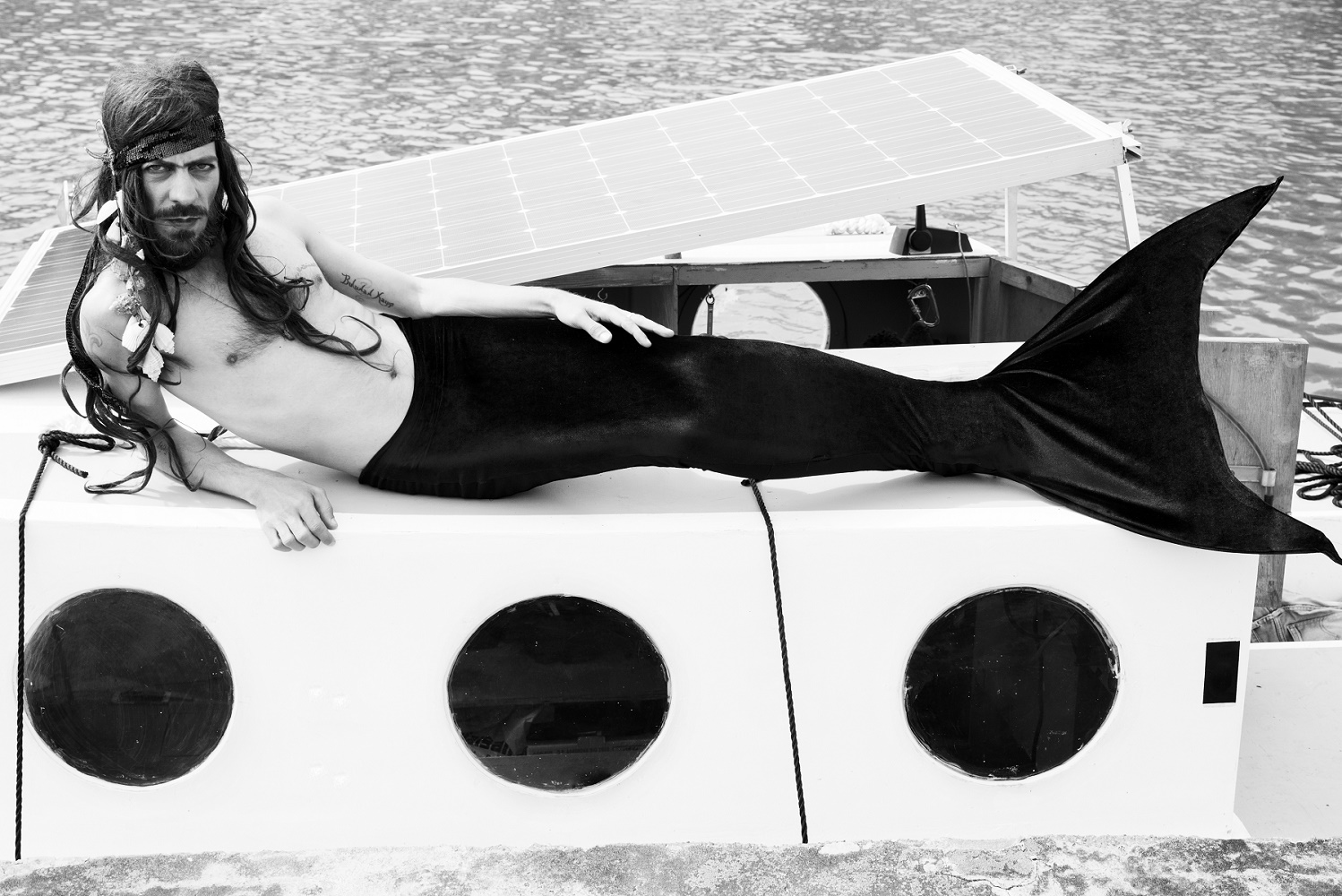
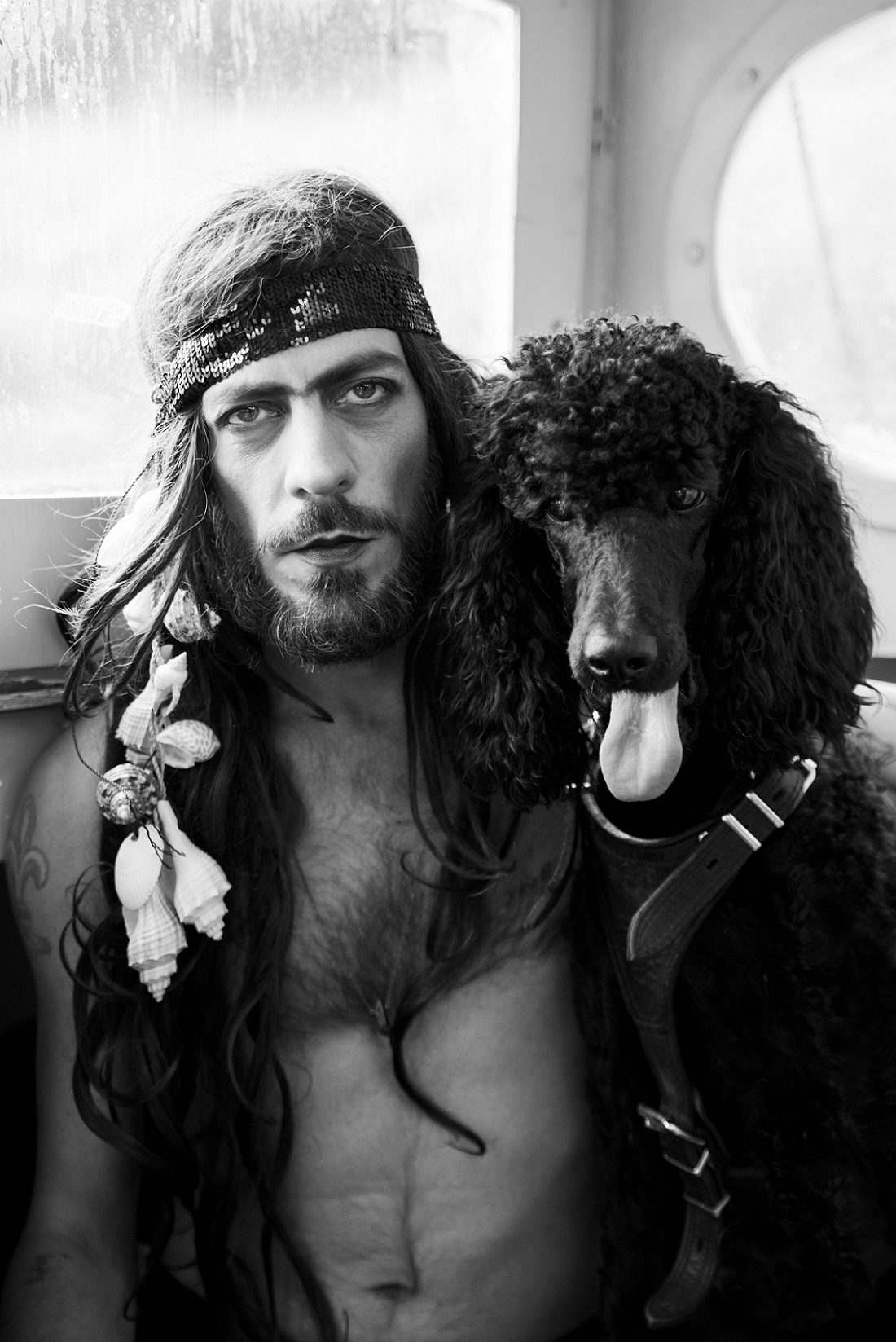
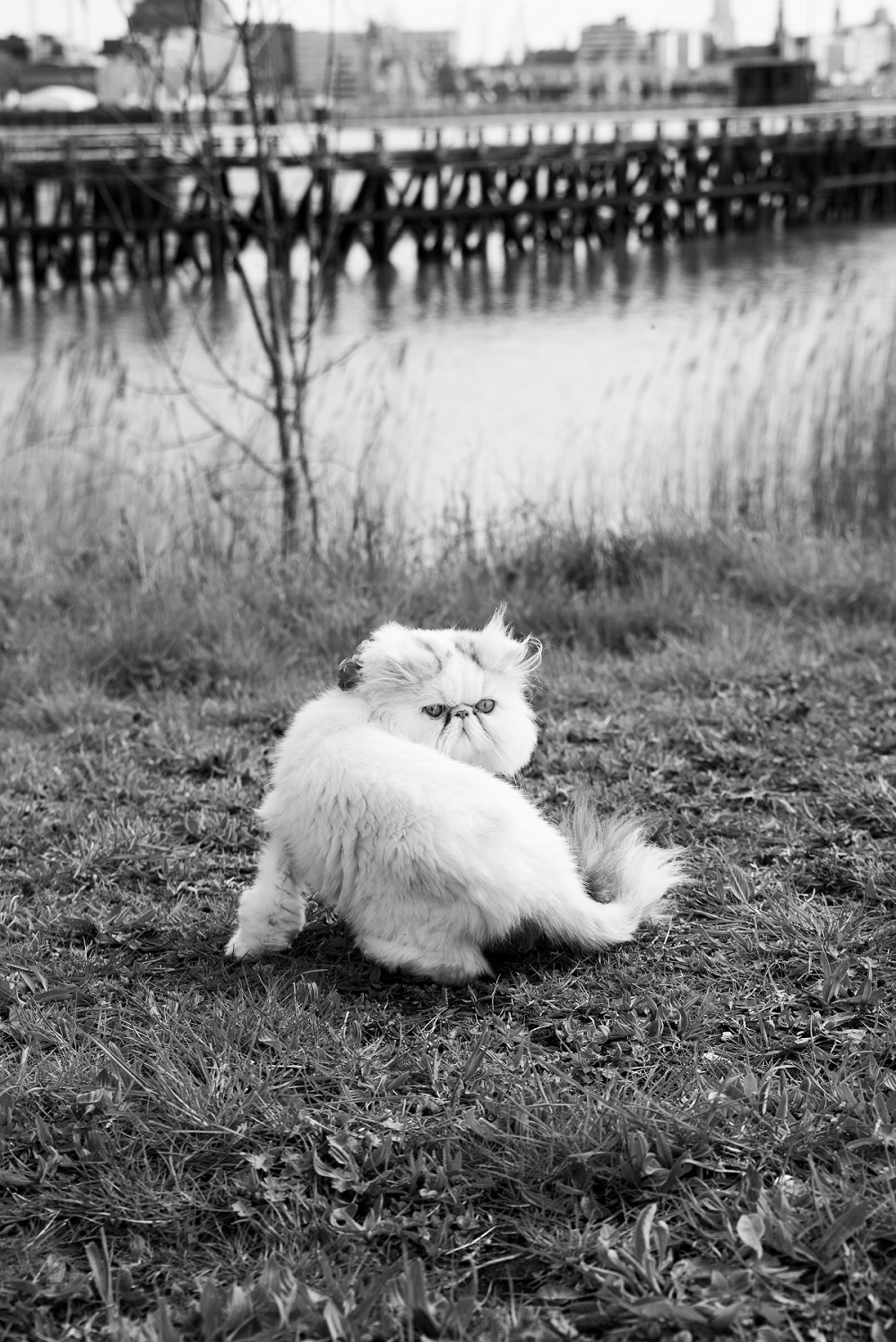
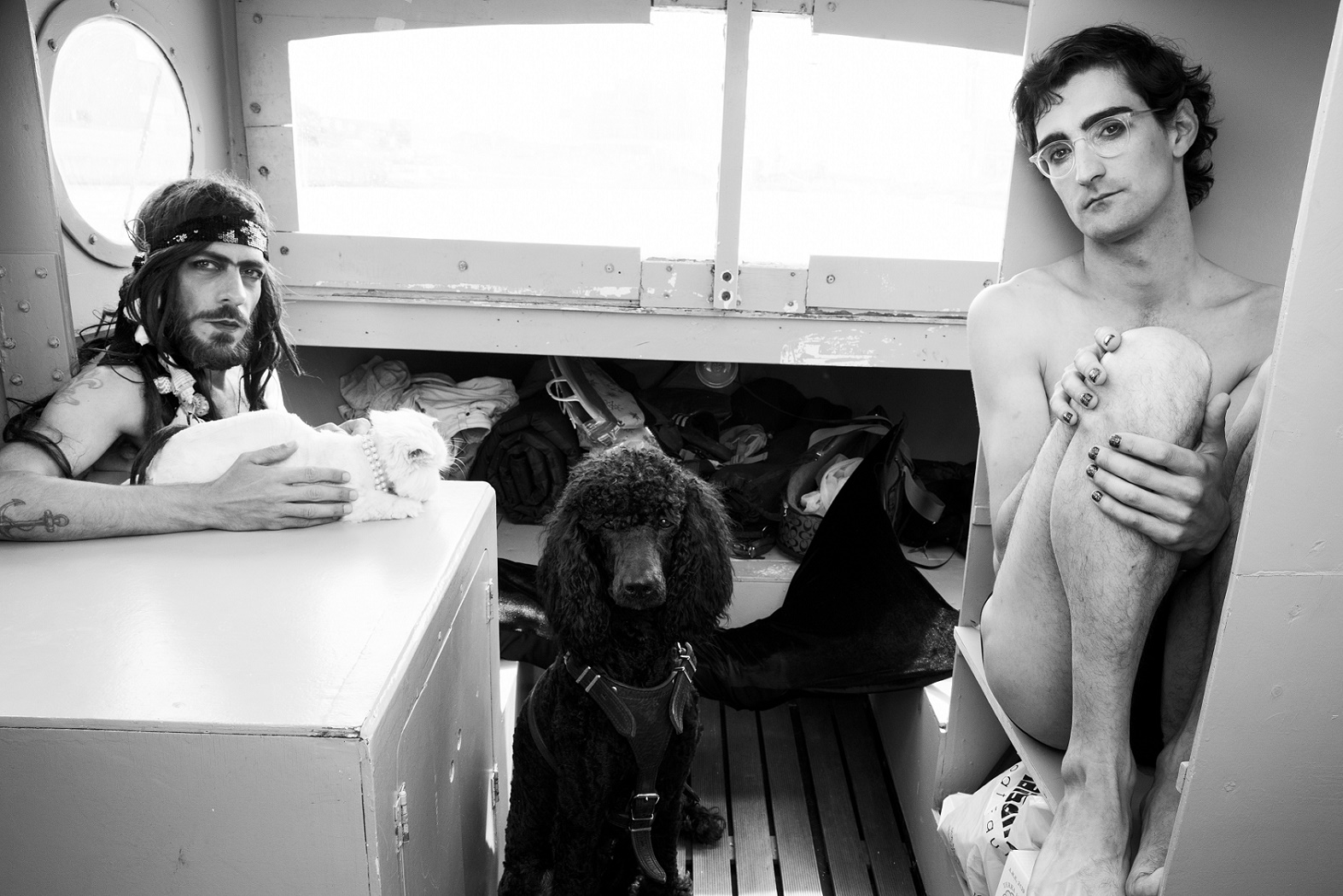
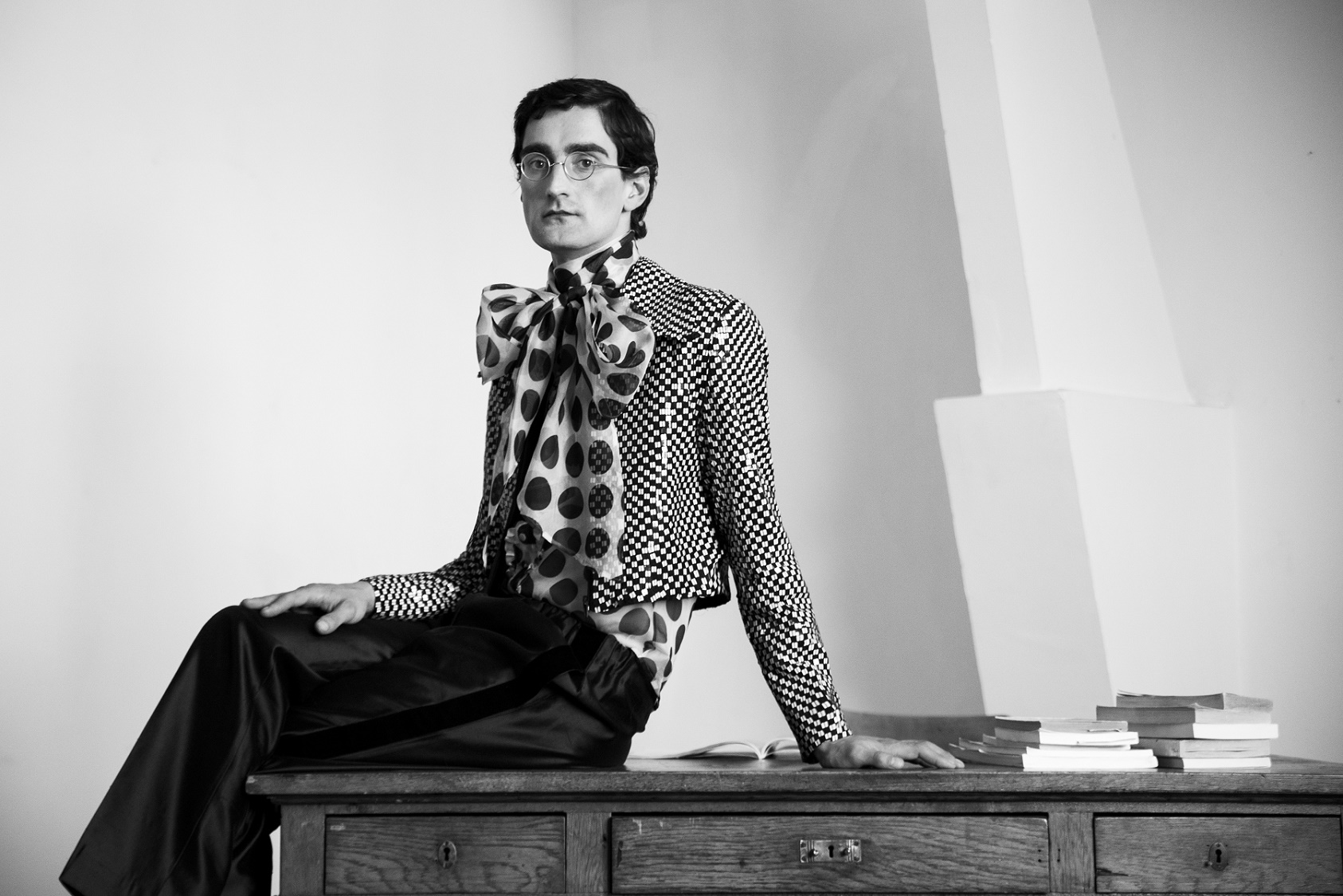
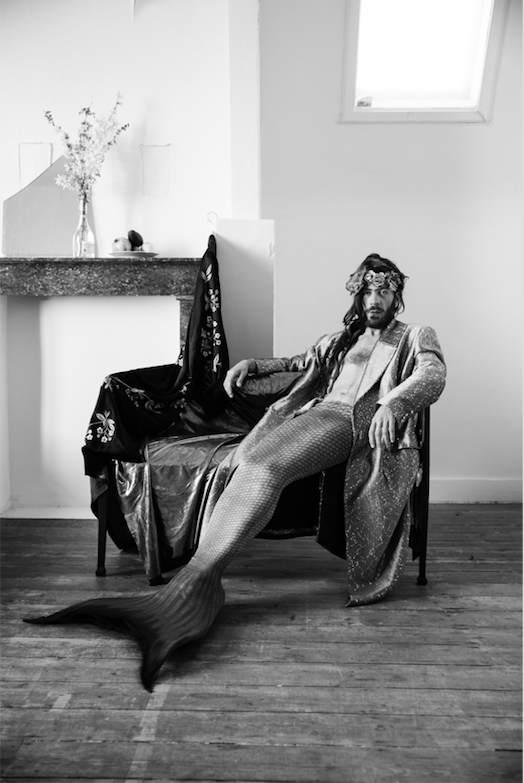
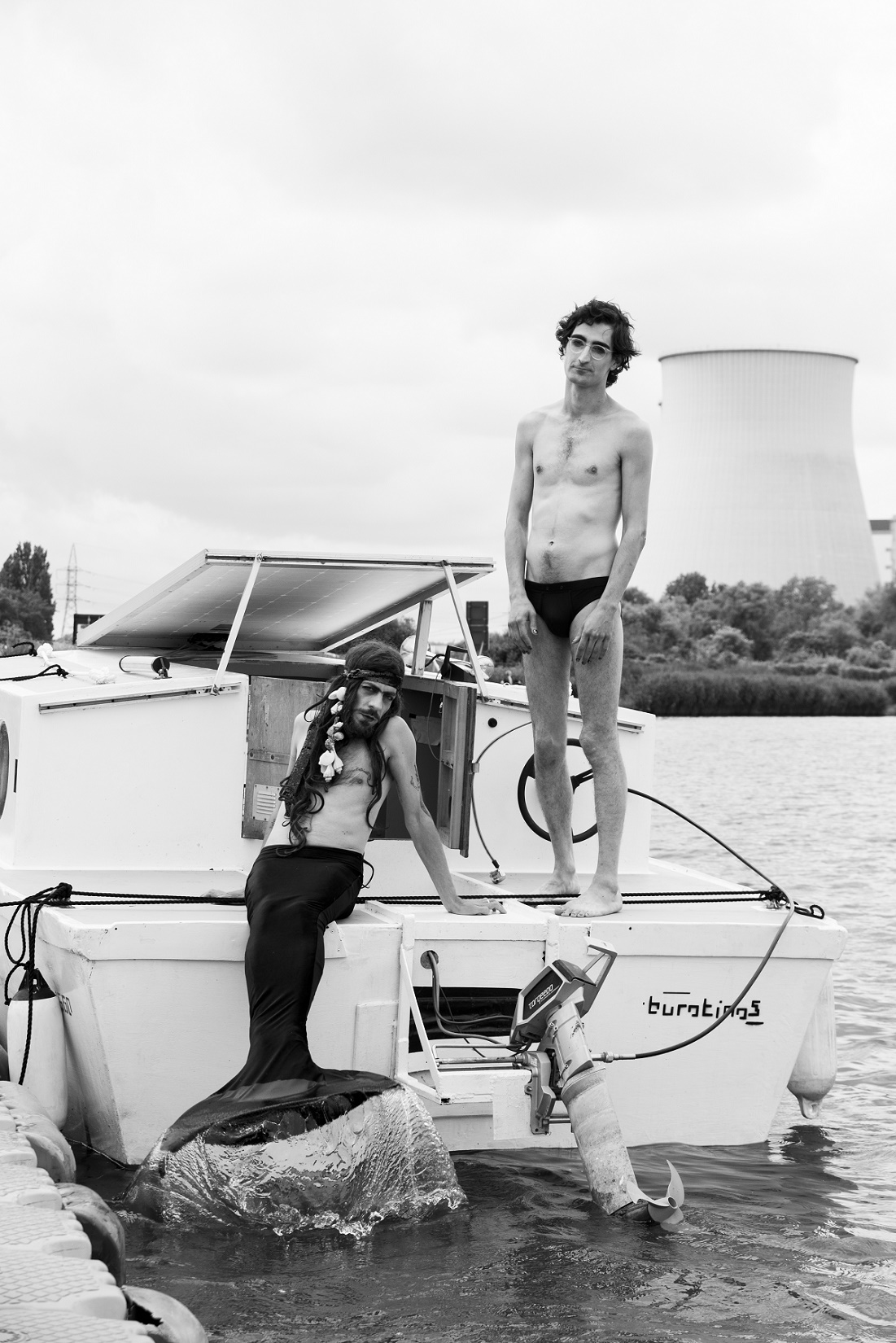
Comments
There are no coments available.